Site Equipment

How often should safety inspections be conducted on a construction site ?
Safety inspections are crucial for construction sites to prevent accidents and ensure worker well-being. The frequency of these inspections depends on the project's size, complexity, type of work, and local regulations. This guide provides a detailed overview of how often safety inspections should be conducted: 1. Daily Inspections: Include visual checks, tools and equipment, and personal protective equipment (PPE). 2. Weekly Inspections: Cover structural integrity, electrical systems, and fire safety. 3. Monthly Inspections: Assess environmental hazards, emergency response plans, and site cleanliness. 4. Quarterly Inspections: Conduct comprehensive site assessments, review training updates, and ensure regulatory compliance. Unannounced spot checks should also be performed throughout the project to maintain safety awareness among workers. Safety should always be a top priority on any construction site, and regular inspections are essential for achieving this goal.

What are the legal requirements for health and safety training on a construction site ?
Legal Requirements for Health and Safety Training on a Construction Site: - Regulatory Bodies: OSHA, EPA, DOL - Types of Training: HAZWOPER, Confined Space Entry, Fall Protection, Electrical Safety, Scaffold Safety - Frequency of Training: Annual refresher courses, on-site training sessions before starting work, regular toolbox talks during work hours - Best Practices: Implementing a safety culture, providing adequate equipment and facilities, conducting regular safety meetings.

Is it cost-effective for companies to invest in on-site fitness facilities for their workers ?
The text discusses whether it is cost-effective for companies to invest in on-site fitness facilities for their workers. The pros of investing include improved employee health and well-being, attracting and retaining top talent, and increased employee satisfaction and loyalty. However, the cons include high upfront costs, limited use and participation, and maintenance and management challenges. Ultimately, whether it is cost-effective depends on the specific needs and resources of each company.

How can I learn more about the history and culture of a heritage site before visiting ?
This text offers detailed steps on how to enrich your knowledge before visiting heritage sites. It suggests reading books and articles, utilizing online resources, listening to podcasts and audio tours, visiting museum exhibits, connecting with local contacts, and accessing academic papers and research. The goal is to appreciate the site's historical context and cultural significance, making the visit more meaningful.

What is the role of personal protective equipment (PPE) in ensuring construction site safety ?
The article discusses the crucial role of Personal Protective Equipment (PPE) in ensuring safety on construction sites. It emphasizes the importance of PPE in protecting workers from physical, chemical, biological, and environmental hazards. The article also highlights the legal implications of not using PPE, as well as its potential to enhance worker productivity. Furthermore, it outlines various types of PPE used on construction sites, such as head protection, eye and face protection, hearing protection, hand protection, foot protection, respiratory protection, and fall protection. The article also provides best practices for using PPE effectively, including proper fit and comfort, maintenance and replacement, training and awareness, and storage and accessibility. Finally, the article concludes that PPE is an essential component of any construction project's health and safety protocols.

How can I make the most of my visit to a heritage site ?
Heritage sites are places that have cultural, historical, or natural significance. To make the most of your visit to a heritage site, you need to plan ahead, be prepared, and engage with the site in meaningful ways. This guide explores tips and strategies for preparation, on-site experience, and post-visit reflection. By following these tips, you can have a meaningful and enriching experience that enhances your understanding and appreciation of the heritage site.

Can you recommend a heritage site that is off the beaten path ?
Qal'at al-Bahrain is a lesser-known heritage site located in Bahrain. It was once a thriving port city during the Dilmun period and played a significant role in ancient trade routes. The site has revealed numerous artifacts and structures that provide insights into the ancient civilization of Dilmun, including burial mounds, fortification walls, a dhow harbor, and a temple complex. Visiting Qal'at al-Bahrain offers several advantages over more popular heritage sites, such as fewer crowds, unique history, cultural experience, and scenic beauty.

What are the most common causes of construction site accidents ?
Construction sites are dangerous places with various hazards that can lead to accidents and injuries. The most common causes of construction site accidents include falls, being struck by objects, electrical accidents, equipment-related accidents, transportation accidents, fires and explosions, overexertion and repetitive strain injuries, and environmental hazards such as extreme heat or cold, poor lighting, and noise pollution.
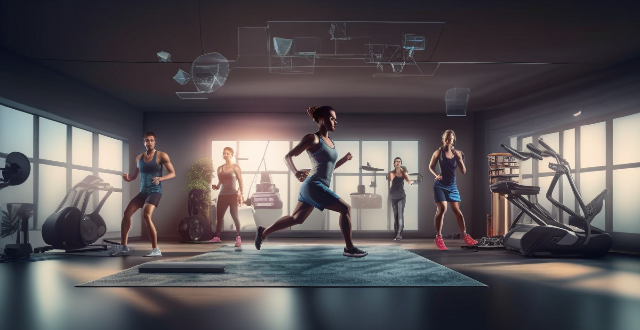
What are the latest trends in sports equipment technology ?
The latest trends in sports equipment technology include wearable devices, virtual reality training, augmented reality coaching, smart gym equipment, and biometric sensors. These innovations aim to improve athlete performance by providing personalized feedback and optimizing workouts.

Which is the best online shopping site for electronics ?
When it comes to buying electronics online, there are several factors that you need to consider before making a decision. These factors include price, selection, customer service, and shipping options. In this article, we will explore some of the best online shopping sites for electronics and help you make an informed decision. Amazon is one of the most popular online shopping sites for electronics. It offers a wide range of products at competitive prices, with fast and reliable shipping options. Best Buy is another great option for buying electronics online. It offers a wide range of products, including TVs, audio systems, cameras, and home appliances. Newegg is a popular online shopping site for computer hardware and accessories. It offers a wide range of products, including CPUs, GPUs, motherboards, and RAM. B&H Photo Video is a popular online shopping site for photography and video equipment. It offers a wide range of products, including cameras, lenses, tripods, and lighting equipment.

What is the cost of building and maintaining a communication base station ?
The article discusses the costs associated with building and maintaining a communication base station, categorizing them into initial setup costs such as site acquisition, design and engineering, equipment procurement, construction and installation, permits and licensing, and testing and commissioning, and ongoing maintenance costs like rent or lease expenses, power consumption, equipment maintenance, software updates, security measures, and staff salaries. It emphasizes the complexity of these processes and the importance of careful planning and budgeting for such projects.

What are the best sports equipment for beginners ?
The article provides a list of seven essential pieces of sports equipment for beginners, including yoga mats, dumbbells, resistance bands, jump ropes, foam rollers, kettlebells, and swim goggles. Each piece of equipment is described in terms of its benefits, uses, and recommendations for beginners. The article emphasizes the importance of having the right equipment for success in any sport and encourages beginners to prioritize safety and proper form when using new equipment.

How can I find the best deals on sports equipment online ?
Finding the best deals on sports equipment online requires research, patience, and using various strategies. These include comparing prices across different retailers, looking for discount codes and promotions, shopping during sales and holidays, considering buying used or refurbished equipment, and joining loyalty and rewards programs. By following these tips, you can save money while getting high-quality gear for your favorite sports activities.
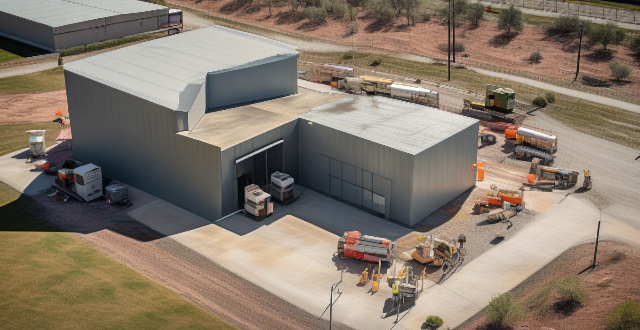
How long does it take to build a charging station, and what are the requirements ?
Building a charging station can take anywhere from a few weeks to several months, depending on various factors such as the size and complexity of the project, the availability of equipment and materials, and local regulations and permits required. The process involves site selection, obtaining necessary permits and complying with regulations, ensuring a reliable source of electricity, procuring equipment, installing infrastructure, integrating software systems, testing and commissioning, establishing maintenance and support plans, promoting the new station, and continuously monitoring and optimizing its performance.

How do I properly use and maintain electrical equipment ?
Electrical equipment requires proper use and maintenance to ensure safety, efficiency, and longevity. Key tips include reading the manual, inspecting before use, avoiding overloading, keeping away from water, cleaning regularly, checking wiring, replacing parts as needed, storing properly, unplugging when not in use, using surge protectors, and avoiding DIY repairs for significant issues. Following these guidelines helps extend the lifespan of electrical equipment and minimizes risks associated with their use.

What are some eco-friendly options for sports equipment ?
Eco-friendly options for sports equipment include using recycled materials, sustainable resources like bamboo and organic cotton, reusable water bottles, energy-efficient gym gear, secondhand items, and repairing damaged equipment.
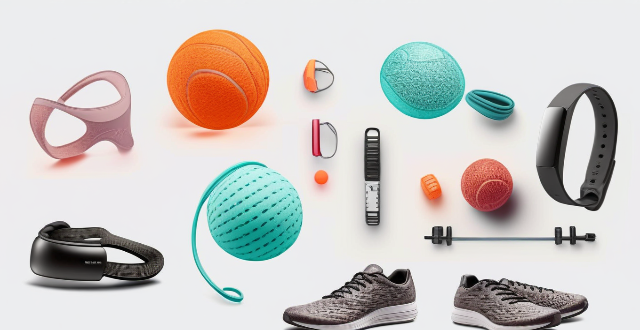
What are the latest innovations in sports equipment ?
The latest sports equipment innovations include smart wearable devices, improved materials and designs, virtual and augmented reality technologies, and connected gym equipment. These advancements aim to enhance performance, safety, and convenience for athletes at all levels.

Can you recommend any budget-friendly gym equipment ?
The text offers recommendations for budget-friendly gym equipment, including multi-functional fitness equipment like adjustable dumbbells, resistance bands, and a jump rope; bodyweight training essentials such as a pull-up bar, push-up stands, and an ab wheel; and additional accessories like a gym mat, foam roller, and kettlebell. These affordable items can help achieve fitness goals without the need for expensive gear or a gym membership.
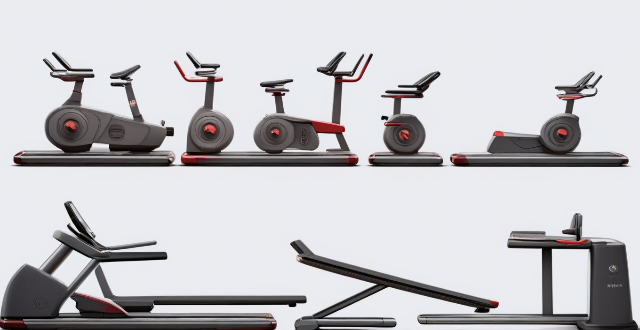
What are some examples of smart sports equipment ?
Smart sports equipment is revolutionizing physical activities by integrating technology to provide enhanced performance tracking, feedback, and engagement. Examples include wearable technology like fitness trackers and smart clothing, smart gym equipment such as connected weights and machines, interactive flooring, virtual reality and augmented reality apps, and smart balls and other sports gear. These devices are making it easier for athletes and enthusiasts to monitor their progress, optimize their training, and enjoy new levels of engagement in their chosen activities.

How have advancements in technology impacted sports equipment ?
Advancements in technology have significantly impacted sports equipment, revolutionizing materials, performance tracking, safety features, training methods, and customization options. Key areas of influence include: 1. **Material Innovations**: Introduction of lightweight and durable materials like carbon fiber and advanced plastics, as well as smart fabrics for performance wear and thermoregulation. 2. **Performance Tracking**: Development of wearable technology such as fitness trackers and GPS devices, along with biomechanical analysis tools like motion capture systems and sensor technology. 3. **Safety Enhancements**: Incorporation of impact sensors and smart concussion management in helmets, synthetic turf for fields, and energy-efficient LED lighting for courts. 4. **Training Aids**: Integration of Virtual Reality (VR) and Augmented Reality (AR) for simulation training and skill development, as well as data analytics for video analysis and biometric feedback. 5. **Equipment Customization**: Application of 3D printing for custom orthotics and jaw guards, and personalization of sports gear like batting gloves and cycling kits. These technological advancements continue to enhance athletic performance, safety, and enjoyment across various sports disciplines.

How has artificial intelligence contributed to the innovation of sports equipment ?
Artificial intelligence has significantly contributed to the innovation of sports equipment by improving its design, functionality, and performance. AI algorithms optimize sports equipment designs based on athlete data and feedback, generate personalized training programs, track performance through sensors and wearable devices, and develop advanced coaching tools. These advancements have transformed the way athletes train, compete, and perform, with more exciting developments expected in the future.

How have advancements in materials science impacted sports equipment design ?
Advancements in materials science have significantly impacted sports equipment design, improving durability, performance, safety, comfort, and customization. Examples include carbon fiber bats, advanced composite tennis racquets, titanium golf clubs, aerodynamic cycling helmets, shock-absorbing running shoes, breathable athletic apparel, customized orthotics, and personalized mouthguards. These innovations not only enhance the athletes' performance but also reduce waste, making it an environmentally friendly option.

What are some must-have sports equipment for runners ?
Running is a popular form of exercise that requires minimal equipment. However, having the right gear can make your running experience more comfortable, enjoyable, and safer. Here are some must-have sports equipment for runners: 1. **Running Shoes** - A good pair of running shoes will provide support, cushioning, and stability to your feet and ankles during your run. Look for shoes that fit well and are designed specifically for running. 2. **Socks** - Socks made from moisture-wicking materials like polyester or nylon can help keep your feet comfortable and blister-free during long runs. 3. **Running Clothes** - Choose clothing made from synthetic materials like polyester or nylon, which draw sweat away from your body and dry quickly. 4. **GPS Watch or Fitness Tracker** - A GPS watch or fitness tracker can help you keep track of your pace, distance, and other metrics while running. 5. **Hydration System** - A hydration system like a hydration belt, handheld water bottle, or hydration pack can help you stay hydrated during long runs in hot weather. 6. **Reflective Gear** - Wearing reflective gear is essential for staying visible to drivers and other pedestrians when running at night or in low-light conditions. 7. **Sun Protection** - Protect yourself from the sun's harmful UV rays by wearing a hat with a brim and applying sunscreen to exposed skin before heading out. 8. **Fuel and Nutrition** - For longer runs, carrying fuel and nutrition like energy gels, chews, or bars can help maintain your energy levels and prevent muscle cramps. Invest in quality equipment that suits your needs and preferences, and don't forget to replace worn-out items regularly to maintain their effectiveness and safety.
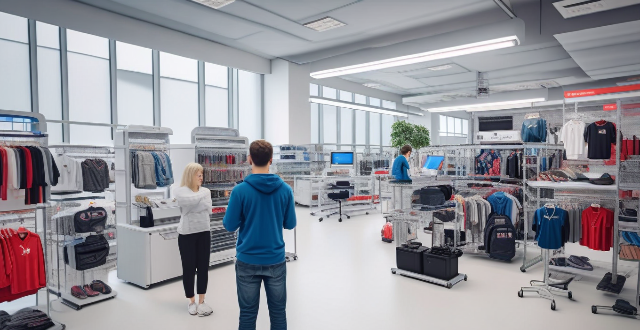
What role does data analytics play in the development of sports equipment ?
Data analytics is crucial in the development of sports equipment. It helps manufacturers collect and analyze data from sensors, wearables, and performance tracking systems to gain insights into how athletes use their equipment. This information can be used for performance evaluation, athlete feedback, customization, injury prevention, and marketing and sales strategies. By leveraging data analytics, manufacturers can create more effective and efficient sports equipment that meets the needs of athletes and consumers alike.

Can you suggest any durable and long-lasting sports equipment brands ?
Durable and Long-Lasting Sports Equipment Brands

What new materials are being used in the production of sports equipment ?
The sports industry is constantly evolving, and with that evolution comes the introduction of new materials used in the production of sports equipment. These materials are designed to enhance performance, increase durability, and improve safety for athletes. Some of the latest materials being used in sports equipment production include carbon fiber, titanium, aerogel, Kevlar, and polyurethane foam. Carbon fiber is lightweight yet incredibly strong, making it ideal for use in items such as bicycle frames, tennis rackets, and golf clubs. Titanium is lightweight, corrosion-resistant, and extremely durable. Aerogel is incredibly light yet strong enough to support significant weight. Kevlar is known for its exceptional strength and heat resistance. Polyurethane foam provides excellent cushioning and shock absorption properties. As technology advances and athletes demand better performance from their gear, we can expect to see even more innovative materials being developed and incorporated into sports equipment production.

How might AI impact the development of new sports equipment and gear ?
AI is revolutionizing the sports equipment industry by optimizing performance, enhancing safety, and enabling customization. It analyzes data to improve club design, predict ball trajectories, and monitor athlete safety with smart sensors. AI also personalizes equipment like running shoes based on gait analysis and adapts to individual needs during use. Additionally, it aids training and coaching through shooting analyzers and virtual coaches. Wearable technology with AI tracks body metrics and optimizes training. As AI advances, further innovations in sports equipment are anticipated.

What sports equipment do I need for a complete home gym setup ?
Setting up a home gym requires careful consideration of various types of sports equipment to ensure a comprehensive workout routine. Here's a summary of the key components: 1. **Cardiovascular Equipment**: Includes treadmills, ellipticals, stationary bikes, and rowing machines for endurance and cardio training. 2. **Strength Training Equipment**: Dumbbells, weight plates, barbells, kettlebells, and resistance bands are essential for building muscle mass and overall strength. 3. **Bodyweight Training**: Pull-up bars, parallette bars, and wall-mounted rings facilitate calisthenics exercises using one's body weight as resistance. 4. **Stretching and Recovery**: Foam rollers and yoga mats aid in muscle recovery, flexibility improvement, and floor exercises. 5. **Additional Items**: An exercise bench, jump rope, and a timer or app can complement your workouts with versatility and intensity tracking. Space availability and budget should guide your choices, allowing you to start with basics and expand gradually. With the right selection of equipment, you can create a well-rounded home gym that supports all aspects of fitness and wellness.

How do safety regulations influence the use of protective equipment in the workplace ?
Safety regulations play a crucial role in ensuring that workers use protective equipment in the workplace. They enforce compliance by requiring employers to provide necessary protective equipment to their employees, mandate regular training sessions for workers about the importance of using protective equipment, conduct safety inspections periodically to ensure that protective equipment is up-to-date, functional, and used correctly, and drive continuous improvement based on new technologies, changing work environments, and lessons learned from incidents. These measures collectively create a safer work environment for all employees.